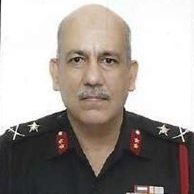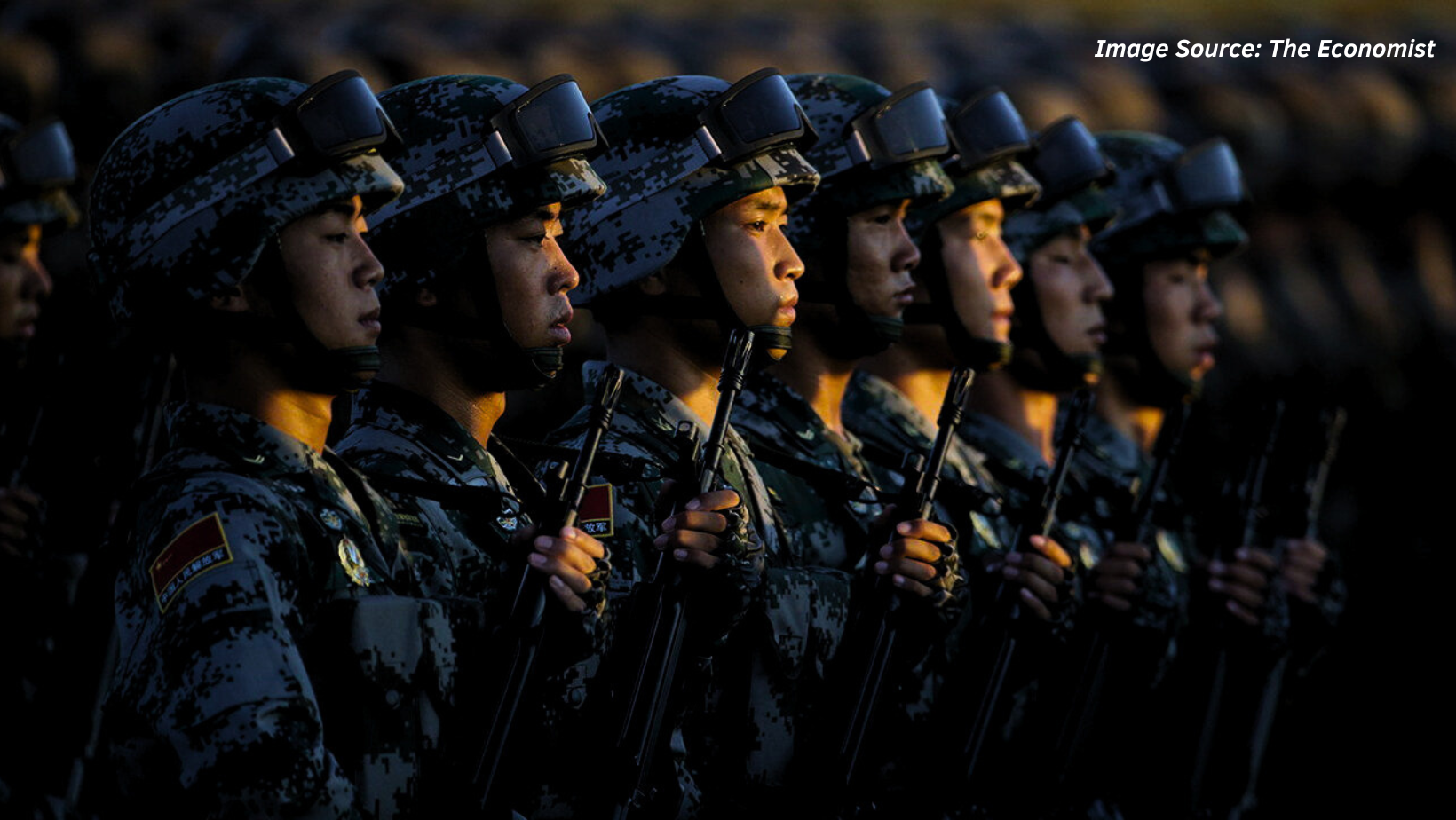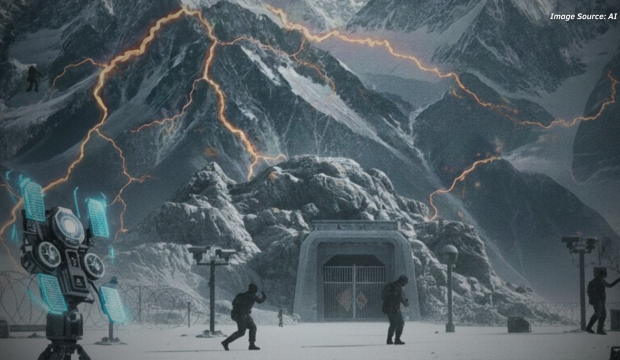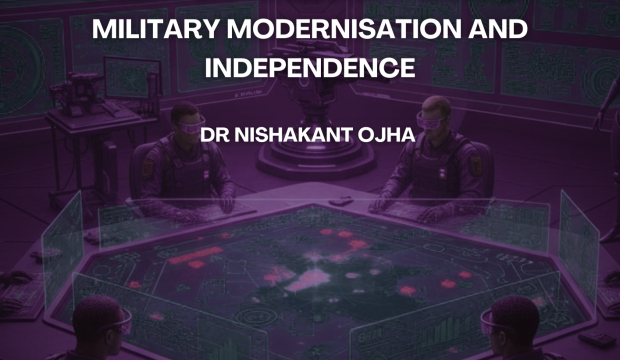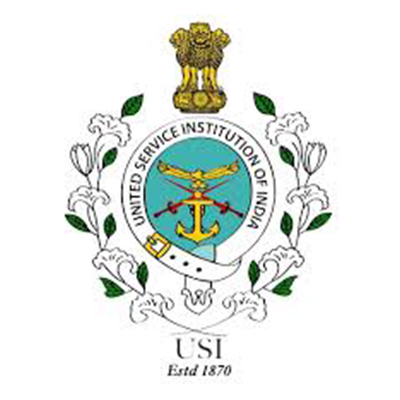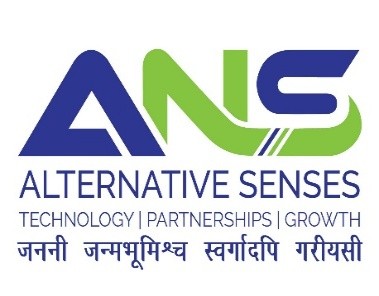The knowledge gained on PLA logistics helps to understand the capabilities of our Northern neighbour better and makes feasible an appreciation of the competitive advantage the potential adversary may enjoy in combat. Besides aforesaid, the study of PLA logistics affords a very good opportunity to track the trajectory a military, somewhat comparable to ours in size, took to achieve near complete jointness in logistics. While one may argue that all armies are unique when it comes to logistics support structures and processes, if examined with the right perspective, a study of a contemporary military can yield many take-aways that are pertinent to the Indian armed forces’ nascent cause.
This article is an attempt to document the PLA’s joint logistics paradigm in terms of its definition, approach, premises, current status, and a brief insight into the evolution of jointness; all with a view to highlight aspects which may be useful to the Indian armed forces in their journey towards enhanced jointness.
The PLA defines joint logistics as a system that “unified the organisation of services to implement all basic logistics work; avoids duplicate staffing, organisations and facilities; and rationally distributes workforce, material and financial resources to support joint operations and joint activities”. Understanding this definition is important and it will be appropriate by picking apart phrases from the definition so as to derive logical deductions. Firstly, it talks of “basic logistics work‟, which implies that the PLA does not intend to eliminate specialised logistics support from its four services, but it seeks to consolidate general logistics support of these services. The phrase avoids duplicate staffing, organisations and facilities‟ is indicative of its determined pursuit for achieving supply chain efficiencies.[1] Seriousness of the aforesaid quest is quite evident – the PLA, as a consequence of setting up the Joint Logistics Departments (JLD) in all erstwhile Military Regions, had eliminated eight division level logistics organisations, 94 rear depots, 47 hospitals and nearly 2000 support organisations by the year 2005. The said cuts led to a reduction of 1, 35,000 troops and was accompanied by the induction of a professional civilian cadre.[2] It is important to highlight that the reduction of manpower was as a consequence of the removal of redundancies in the general logistics support across the three services, and not on account of optimisation of service specific logistics support.
The PLA by implementation of jointness has aimed to create an ideal logistics support system that:-
- Provides precision logistics support for joint, dynamic and high tempo
- Achieves strategic unity of effort. It envisages implementing an integrated joint logistics command system that is fully integrated with a strategic joint operational command
- Leverages full potential of China’s comprehensive national power through civil-military fusion to maximise combat power, ensure peace time efficiency, and maintain a constant state of combat
The PLA has also qualified prerequisites for achieving the above depicted ideal logistics system. These have been identified by the Chinese sources as centralised command, advanced information systems and civil-military fusion.[3] True jointness, as defined by the PLA, can’t be achieved without centralisation and informatisation, and these prerequisites have had a telling impact on the evolution of PLA logistics as is detailed in the next part of the article.[4]
The PLA began its quest for jointness when its necessity was first flagged by Zhou Enlai in the early 1950s. In the year 1952, almost 25 years after PLA was founded, the separate supply systems of the three services were unified under General Rear Area Service Department. In the year 1958, the department was re-named as the General Logistics Department (GLD).[5] The GLD was one of the three Departments under the Central Military Commission (CMC), the highest military decision-making body.
The next set of reforms came almost four decades later in the late nineties, and were spear headed by Jiang Zemin. In July 1998, the PLA began divesting itself from all commercial activities. In the same year, the General Armament Department (GAD) was created under the CMC, which absorbed part of the GLD, the Commission for Science, Technology and Industry for National Defence, and the General Staff Departments’ Equipment Department.[6] In Jan 1999, Jiang Zemin initiated training and organisation for joint operations by way of promulgation of the PLA Joint Campaign Programme, which in term paved the way for jointness in logistics.[7] There are references in literature which suggest that the PLA was also inspired by the US Joint Vision 2020.
In the year 2002, Joint Logistics Departments (JLD) were established in each of the seven Military Regions.[8] The JLDs consolidated control over the “general purpose‟ supplies, and unified most of the transportation, medical and material support, infrastructure construction, equipment procurement and financial management under one headquarters. This helped eliminate several redundant organisations manned by the services; however, the services continued to retain control over their service specific logistics structures/ supply lines.
In July 2004, the GLD initiated a joint logistics pilot test in Jinan Military Region and attempted to validate the combined functioning of the JLD logistics and the services logistics organisations under the newly formed Jinan War Zone JLD.[9] The pilot project was analysed deliberately, and its findings pointed to a lack of asset visibility, a need for improvement in information technology infrastructure, and the revision of established logistics standards, regulations, policies, and procedures. More significantly, the CMC leadership was of the view that comprehensive PLA structural reforms would be necessary to effectively centralise logistics command.
In 2007, Hu Jintao identified the cultivation of high-quality logisticians, mechanisation and informatisation, application of science and technology, and development of an integrated logistics support system as the necessary objectives for achieving logistics modernisation.[10] The CMC in the same year promulgated “An Outline plan on Comprehensively Building Modern Logistics” which demanded that all tasks required to fully transition to joint logistics should be completed by 2020. The period from 2009 to 2015 was used by the PLA to test a variety of paradigms for achieving jointness in logistics support using a series of exercises with an increasing level of sophistication.
On February 1, 2016, PLA created the joint operations command system, which reorganised the forces under the seven Military Regions into five theatre commands centrally directed by the CMC..[11] The Theatre Commanders now exercise direct control over the army, navy and air force elements in the theatre, along with some conventional Rocket Force units as well. The Joint Logistics Staff Force (JLSF) was inaugurated on September 13, 2016. Furthermore, the GLD was replaced by the Logistics Support Department (LSD) and the GAD was renamed as the Equipment Development Department (EDD). Salient aspects of the reformed logistics structure are appended below:-
- The JLSF is responsible for logistics support to the theatre commands, and controls the units which were directly under the GLD and those which were under the JLD of Military
- The JLSF is led by the commander of the Wuhan Joint Logistic Support Base, which in turns directs five joint logistics support centers (JLSC). Four out of five JLSCs are not co-located within the theatre headquarters. In fact, the JLSC of western theatre is 758 miles away from the theatre headquarters, and that of the central theatre is 432 miles Therefore, there is a lot of reliance on informatisation of the PLA logistics.[12]
- The JLSCs maintain “fraternal‟ relations with the supported units, and they do not hold a subordinate relationship with the theatre commands themselves (Figure 1 refers).
- The service specific supply chains have remained largely untouched by the reform of Sep 2016. Specialisation has been treated with due respect, and it is the general supplies which have been the focus of jointness since the beginning.
- The LSD continues to carry out most of the GLD responsibilities, less those assigned to the JLSF, which include – PLA wide strategic logistic planning, materials management and procurement, facilities management, contracting, budget management, etc.[13]
- The JLSF is not controlled by the LSD, and the JLSF, the LSD and EDD function directly under the CMC. Thus, there is a clear demarcation between force management and force sustenance issues, in line with the basic philosophy of the CMC.
The reformed logistics organisation is now over seven years old, and has been analysed and commented upon in various forums. Concerns regarding centralisation of resources and its functioning in operations being the principal observations. However, centralisation, as per PLA, offers two distinct advantages. First, it improves management and brings in efficiencies. The 2020 Science of Military Strategy noted that JLSF “solved the problem of theatre and below units developing its own logistics support and equipment support”.[14] Secondly, it makes logistics support across theatre boundaries feasible. The PLA is of the view that a centralised control would enable the move of resources from one theatre to another as per requirement while reducing the possibilities of theatre commanders holding onto assets that may be required elsewhere.
In the concluding part, let us summarise some of the key take aways from the logistics reform journey of the PLA. A few apparent ones are appended below:-
- It is only obvious that the Chinese enjoyed an early start which has enabled them to experience, experiment and evolve over the last seven decades in a deliberate Militaries that start late may not enjoy this luxury.
- The PLA logistics transformation has been driven at the highest level of the PLA and the Chinese Communist Party. Participation of Zhou Enlai, Jiang Zemin, Hu Jintao and Xi Jinping is visibly pronounced in a variety of Can we infer that since changes in logistics organisations impinge upon a large and varied set of stake holders, involvement of those in power becomes essential for reforms to succeed.
- The PLA has taken a top-down approach to logistic reforms. Zhou Enlai commenced with CMC level Later, Jiang Zemin and Hu Jintao focused at the Military Region (theatre level) and Xi Jinping has brought change down to the lowest level. Should other militaries also consider a top down approach.
- The PLA attaches significance to quality and qualification of its supply chain managers/ It sees herein an opportunity for employment of professional civilians. Is there a case to de-combatise the military supply logistics chain.
- The modification of transformation proposals based on exercises the PLA has conducted has helped in the refinement of concepts and structures at the design The PLA logistics had adopted a very patient and deliberate approach to consolidate its logistic organisations. The degree of cautiousness in changing procedures and structures also reflects the importance the PLA assigns to them.
- The PLA has accepted informatised logistics as a prerequisite for jointness. Further, unified military logistics standards were enforced to meet the challenges of inter-connectivity and inter-operability. Formation of a Military Logistics Information Transmission Backbone Network, development of a robust information management platform, and deploying of comprehensive enterprise applications are some of the essentials that were addressed with sincerity by the PLA. Can any military achieve true jointness without addressing these issues?
- The PLA has witnessed a shift from a joint logistics model which empowered the Military Regions to a centrally controlled hub and spoke model with theatres having no control over the supporting Is centralisation necessary for jointness? Pros and cons of such a model are enumerated in the preceding paragraphs. It will be only natural for armed forces moving on the path of jointness to wrestle with this dilemma in times to come.

Figure 1: Overall PLA logistics structure (Solid lines denote superior – subordinate relation and the dotted lines denote coordination).

Figure 2: Quotes on logistics.
DISCLAIMER
The paper is author’s individual scholastic articulation and does not necessarily reflect the views of CENJOWS. The author certifies that the article is original in content, unpublished and it has not been submitted for publication/ web upload elsewhere and that the facts and figures quoted are duly referenced, as needed and are believed to be correct.
References
- LeighAnnLuce and ErinRichter , (2019), “Handling Logistics in a Reformed PLA:
The Long March Toward Joint Logistics”, in Phillip C. Saunders et al. (eds.) Chairman Xi Remakes the PLA, Washington DC: National Defence University Press - Ibid
Kevin McCauley, (2018), “China’s Military Reforms and Modernization: Implications for the United
States”, [Online: web], Accessed 15 October 2024, URL: https://www.uscc.gov/sites/default/files/McCauley_Written%20Testimony.pdf- Ibid
- LeighAnnLuce and ErinRichter , (2019), “Handling Logistics in a Reformed PLA:
The Long March Toward Joint Logistics”, in Phillip C. Saunders et al. (eds.) Chairman Xi Remakes the PLA, Washington DC: National University Press - Tai Ming Cheung, (2002), “China’s Entrepreneurial Army”, Oxford: Oxford University Press
- Mark R. Cozad, (2019), “Toward a More Joint, Combat-Ready PLA?”, National Defence University Press, URL: https://ndupress.ndu.edu/Media/News/News-Article-View/Article/1747562/toward-a-more-joint-combat-ready-pla/
- LeighAnnLuce and ErinRichter , (2019), “Handling Logistics in a Reformed PLA:
The Long March Toward Joint Logistics”, in Phillip C. Saunders et al. (eds.) Chairman Xi Remakes the PLA, Washington DC: National Defence University Press - Ibid
- Cortez A. Cooper III, (2018), “PLA Military Modernization: Drivers, Force Restructuring, and Implications”, RAND Corporation, URL: https://www.rand.org/content/dam/rand/pubs/testimonies/CT400/CT488/RAND_CT488.pdf
- Shannon Tiezzi, (2016), “It’s Official: China’s Military Has 5 New Theater Commands”, The Diplomat, URL: https://thediplomat.com/2016/02/its-official-chinas-military-has-5-new-theater-commands/
- Ibid
- LeighAnnLuce and ErinRichter , (2019), “Handling Logistics in a Reformed PLA:
The Long March Toward Joint Logistics”, in Phillip C. Saunders et al. (eds.) Chairman Xi Remakes the PLA, Washington DC: National Defence University Press Air University,(2022), “In Their Own Words: 2020 Science of Military Strategy”, URL: https://www.airuniversity.af.edu/CASI/Display/Article/2913216/in-their-own-words-2020-science-of-military-strategy/
